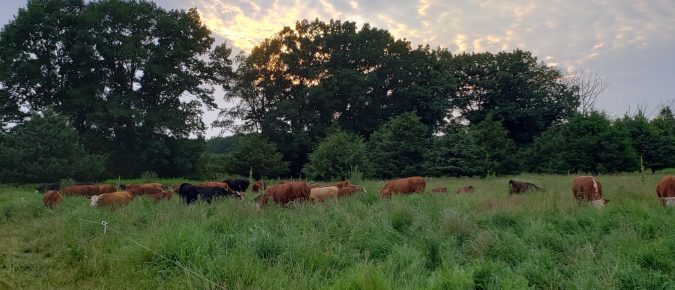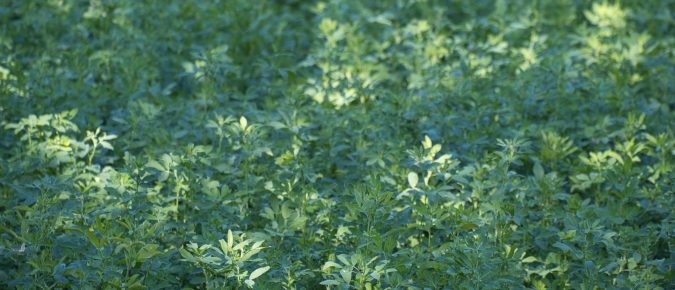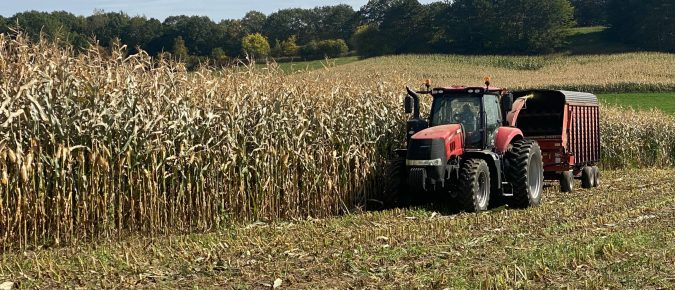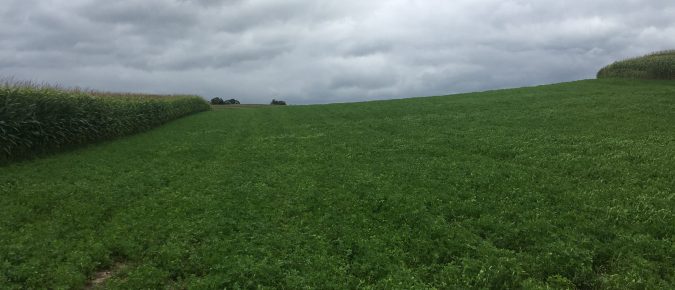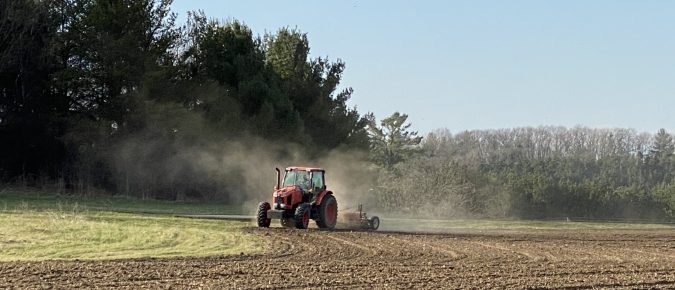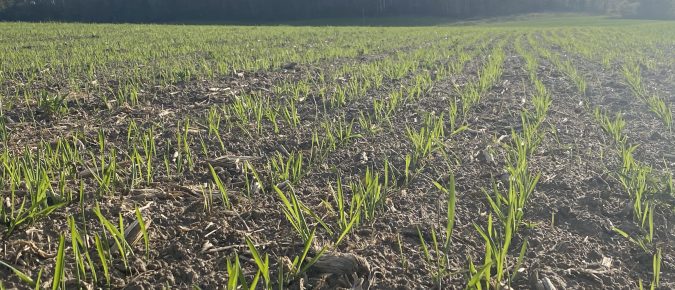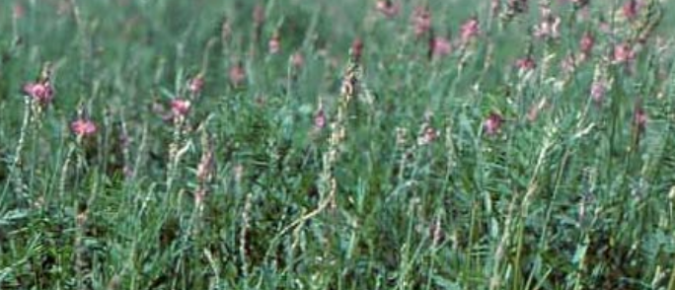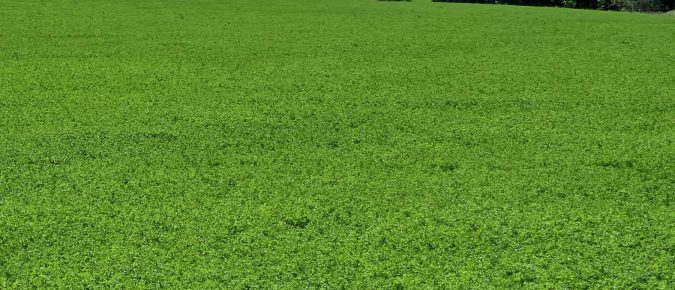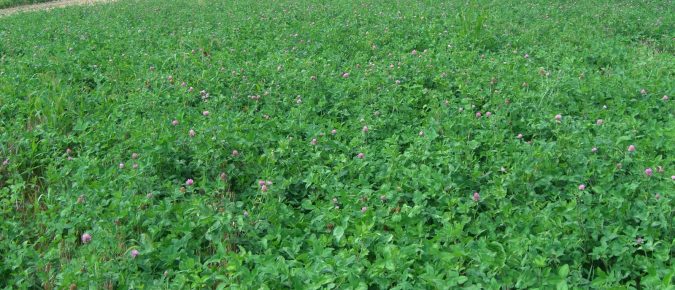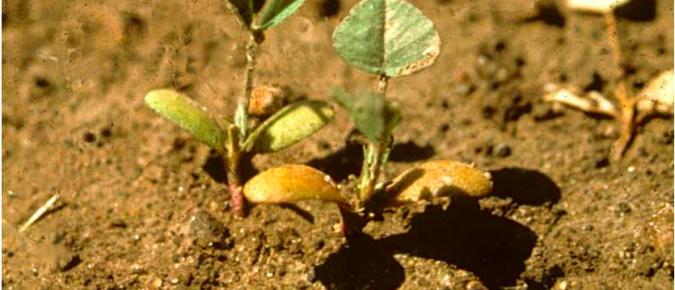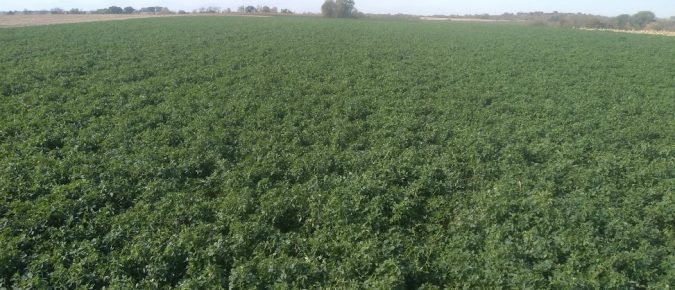“If you graze it, it will grow.” This variation of the old Field of Dreams adage is often the mantra of grazing influencers. And in many cases, adding livestock to a forage system can induce growth through disturbance and nutrient cycling.
The cold temperatures in early spring can cause some frost damage to alfalfa. Following are recommendations for evaluating damage and taking action.
There continues to be a lot of interest in corn silage harvested with a self-propelled forage harvester (SPFH) equipped with an aftermarket processor having cross-grooved processing rolls set for 2- to 3-mm roll gap and greater roll speed differential than has typically been used (32% versus 21%). Also, the developer of this processor recommends that […]
Alfalfa can remain productive in stands from four to ten years or more, but as plant population declines renovation eventually becomes necessary. Alfalfa is commonly grown in rotation with grain crops, however, continuous production is desirable in many areas, particularly on soils that are marginal for economic grain production. Reseeding alfalfa immediately following alfalfa is not recommended in most states due to the negative effects of autotoxicity, seedling disease and insect pests which can build up in old stands. A rotation interval is commonly recommended between killing an old stand of alfalfa and reseeding new alfalfa to help insure successful establishment.
The high price of nitrogen fertilizer has increased interest in planting a legume crop after wheat or canning crop harvest as a green manure to provide some nitrogen credits for next year’s crop. This practice can provide some nitrogen and organic matter as well as increase ground cover to reduce erosion from fields. However, it may not be cost effective.
First, we should put things into perspective by stating that alfalfa is still the best choice, in most cases, for long-term production of high quality, high tonnage harvested forage. We also expect to see increased use of corn silage, where topography and farm plans permit in dairy rations, in the alfalfa-based rations.
Sainfoin (Onobrychis vicifolia) is deep-rooted and very drought-resistant. It yields best on high pH, deep, well-drained soils, and will not withstand wet soils or high water tables. It is not as winterhardy as some cultivars of alfalfa. Sainfoin is short-lived where root and crown rots are a problem.
Some farmers always get a good forage stand and some always fear seeding because of difficulty getting good stands. A good stand is crucial to profitability. If the stand is thin, it will never yield well and will be weedy. Additionally, if the stand is so poor that reseeding is necessary, the grower will have lost most or all of a growing season for forage production on that field.
Late summer seeding is an excellent way to establish stands and is actually the preferred time of year to seed in many regions. But your decision to late summer seed should be based on weather conditions (temperature), available soil moisture, and your projected forage needs (importance of having a fully productive alfalfa stand available next spring vs. direct seeding).
Aphanomyces root rot (ARR) is a serious disease of both recently seeded alfalfa and established alfalfa stands. ARR can cause severe yield reductions in affected alfalfa fields. Variations of the disease also occur on many other legumes (including soybean, snap bean, faba bean, red kidney bean, pea, red clover, and white clover) and can cause significant losses in these crops as well.
Stress in the seeding year reduces future yields of alfalfa. This occurs because the seeding year determines the stand plant density as well as individual plant size and vigor. The following paragraphs will show that autotoxicity, potato leaf hopper, cover crop, and, possibly, drought stresses in the seeding year will reduce alfalfa yield in future years, even when the stress is gone.
The decision to take a late summer or fall cutting of alfalfa should be considered carefully. A farm should evaluate current forage needs, economics, stand health, and timing to make the best decision for their individual situation. Although the need for more forage may override some other factors, the timing of harvest is still critical. […]

